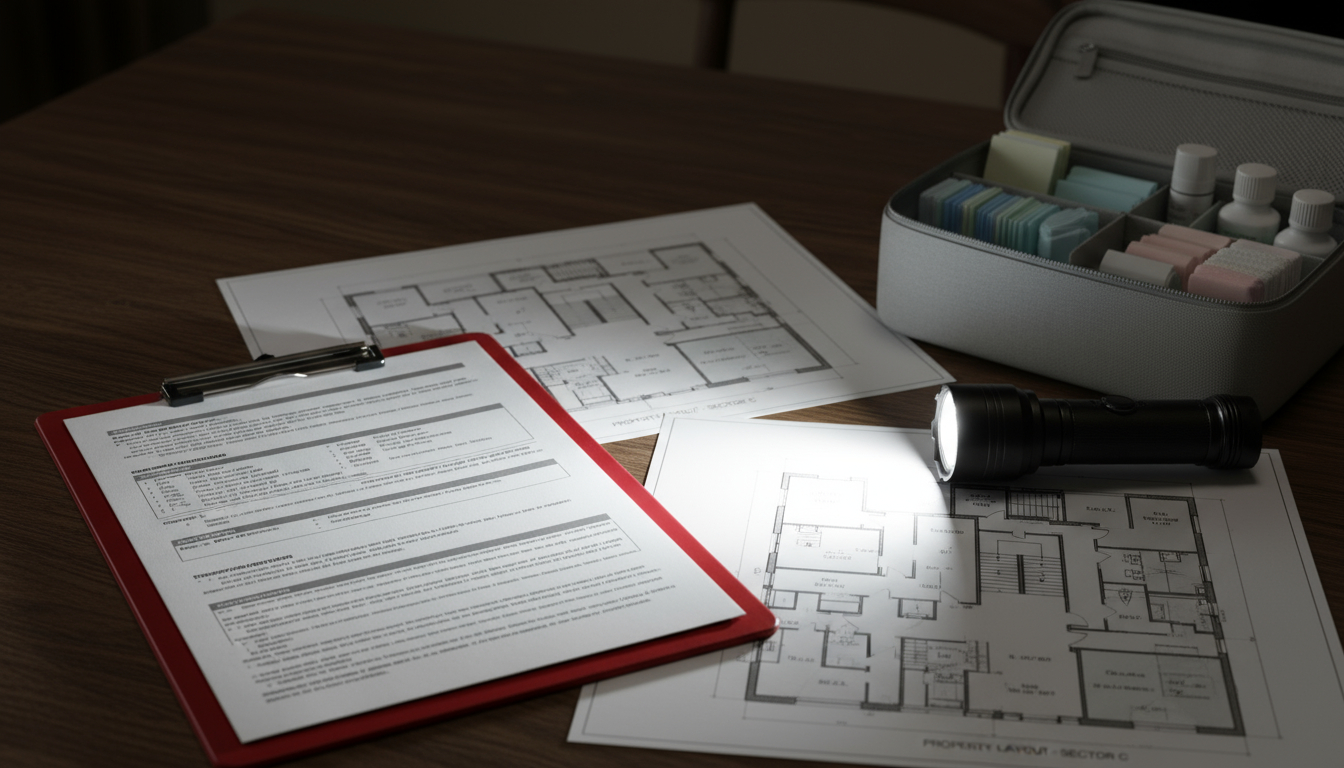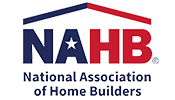What is Disaster Recovery Planning?
Disaster recovery planning is a comprehensive approach to preparing your property and operations for potential emergencies. It goes beyond basic insurance coverage to create actionable strategies that minimize damage, protect assets, and ensure quick recovery when disasters occur.
Think of it as a roadmap for crisis management. While you can’t prevent every disaster, you can control how prepared you are to face it. A well-designed recovery plan identifies potential risks specific to your property, establishes clear protocols for response, and creates systems that protect what matters most.
This planning encompasses everything from water damage and fire emergencies to severe weather events and prolonged power outages. It’s not just about responding after disaster strikes—it’s about implementing preventive measures that reduce your vulnerability in the first place.
Why Property Owners Need Disaster Recovery Planning
The numbers tell a sobering story. Properties without emergency planning experience 40% longer recovery times and 65% higher restoration expenses compared to those with established plans. These statistics reflect real costs in both money and disruption to daily life.
Beyond financial protection, disaster preparedness provides something equally valuable: control during chaos. When you have a plan in place, you’re not scrambling to remember where important documents are stored or trying to figure out who to call first. You’re following a tested protocol that gets you back to normal faster.
Insurance companies increasingly recognize this value. Many now offer reduced premiums for property owners who demonstrate comprehensive recovery planning. They understand that prepared clients file fewer claims and experience less severe damage overall.
Core Components of an Effective Recovery Plan
Every disaster recovery plan should include these essential elements, regardless of your property type or location. These components work together to create a comprehensive safety net that covers all aspects of emergency preparedness.
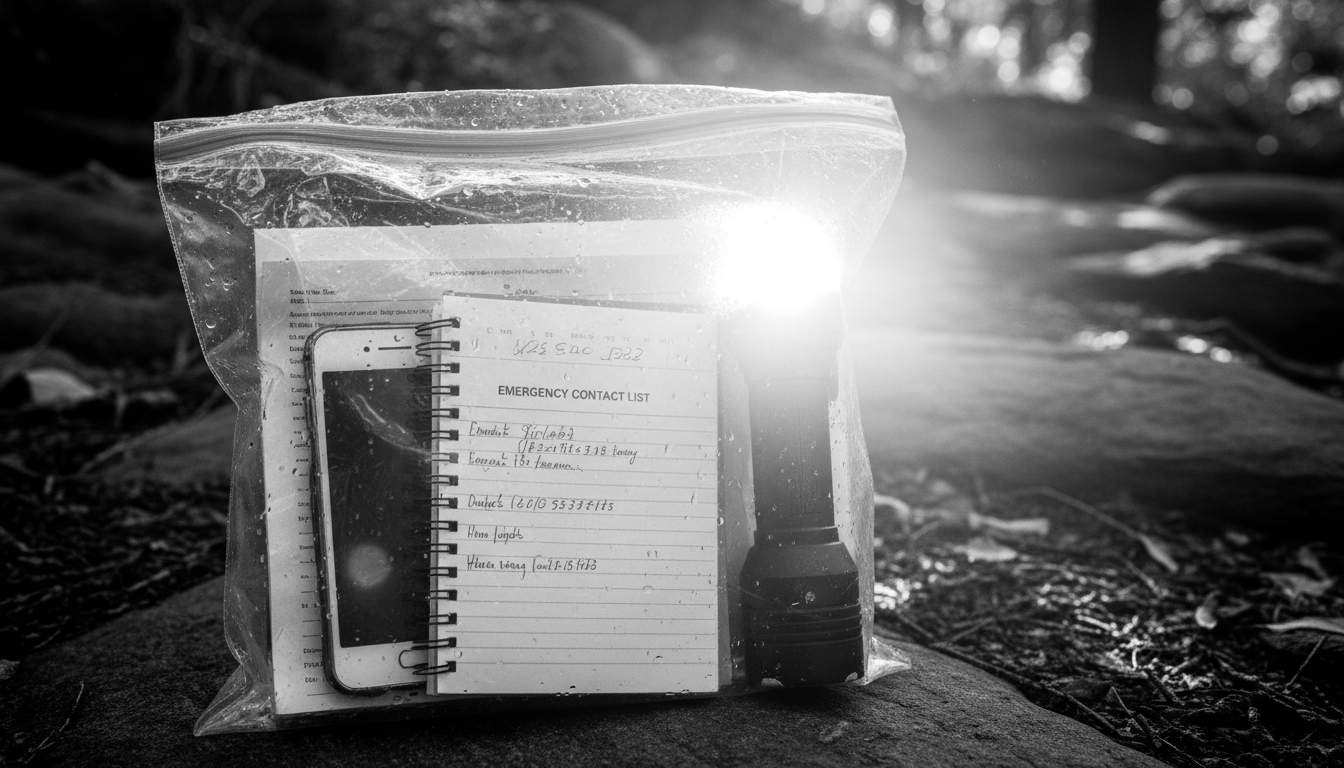
Risk Assessment and Vulnerability Analysis
Start by identifying the specific disasters your property faces. Coastal properties prioritize hurricane and flood preparation, while regions prone to freezing focus on pipe protection and ice dam prevention. Understanding your unique vulnerabilities shapes every other aspect of your plan.
Walk through your property with a critical eye. Look for weak points—basement areas prone to water intrusion, attic spaces vulnerable to storm damage, aging plumbing systems, or electrical panels in flood-prone locations. Document these vulnerabilities with photos and notes.
Consider both natural and man-made risks. Fire hazards from outdated wiring, water damage from appliance failures, and structural issues from deferred maintenance all deserve attention in your risk assessment.
Emergency Contact Network
Your contact list should include immediate responders, professional services, and personal networks. Keep this information in multiple formats—printed copies in waterproof containers, digital backups in cloud storage, and physical copies stored off-site with trusted contacts.
| Contact Type | Who to Include | Information Needed | Update Frequency |
|---|---|---|---|
| Emergency Services | Fire, police, medical | Direct numbers, non-emergency lines | Annually |
| Restoration Professionals | 24/7 emergency restoration, plumbers, electricians | Service numbers, after-hours contacts | Quarterly |
| Insurance | Agent, claims department, policy numbers | All contact methods, policy details | At renewal |
| Utilities | Water, gas, electric, internet providers | Account numbers, emergency shutoff | Annually |
| Personal Network | Family, neighbors, emergency contacts | Multiple phone numbers, addresses | Semi-annually |
Asset Documentation and Inventory
Comprehensive documentation proves invaluable when filing insurance claims or assessing damage. Create detailed inventories of your property contents, including photographs, receipts, serial numbers, and estimated values for significant items.
Use video walkthroughs to capture room-by-room conditions. Speak as you record, describing items and their approximate purchase dates. Store these records in multiple secure locations, including cloud-based services that remain accessible even if your property is damaged.
Don’t forget important documents—deeds, titles, insurance policies, financial records, medical information, and identification documents should all be digitized and stored securely. Consider a fireproof safe for physical copies of irreplaceable documents.
Emergency Supplies and Equipment
Strategic supply placement makes all the difference during emergencies. Stock critical items in easily accessible locations that remain safe even during disasters. Think beyond basic emergency kits to include property-specific needs.
💡 Pro Tip: Keep emergency supplies in waterproof containers on upper floors or elevated storage areas. Basement storage is convenient but vulnerable to flooding.
Essential supplies include:
- Flashlights with fresh batteries and backup power sources
- First aid supplies with regular expiration date checks
- Water shutoff tools and knowledge of main valve locations
- Portable radio for emergency broadcasts
- Fire extinguishers appropriate for different fire types
- Protective equipment like gloves, masks, and safety glasses
- Basic tools for emergency repairs or shutoffs
Creating Your Disaster Recovery Plan: Step-by-Step Process
Building an effective recovery plan doesn’t happen overnight, but following a systematic approach ensures you cover all essential elements. This step-by-step process creates a comprehensive framework tailored to your property’s specific needs.
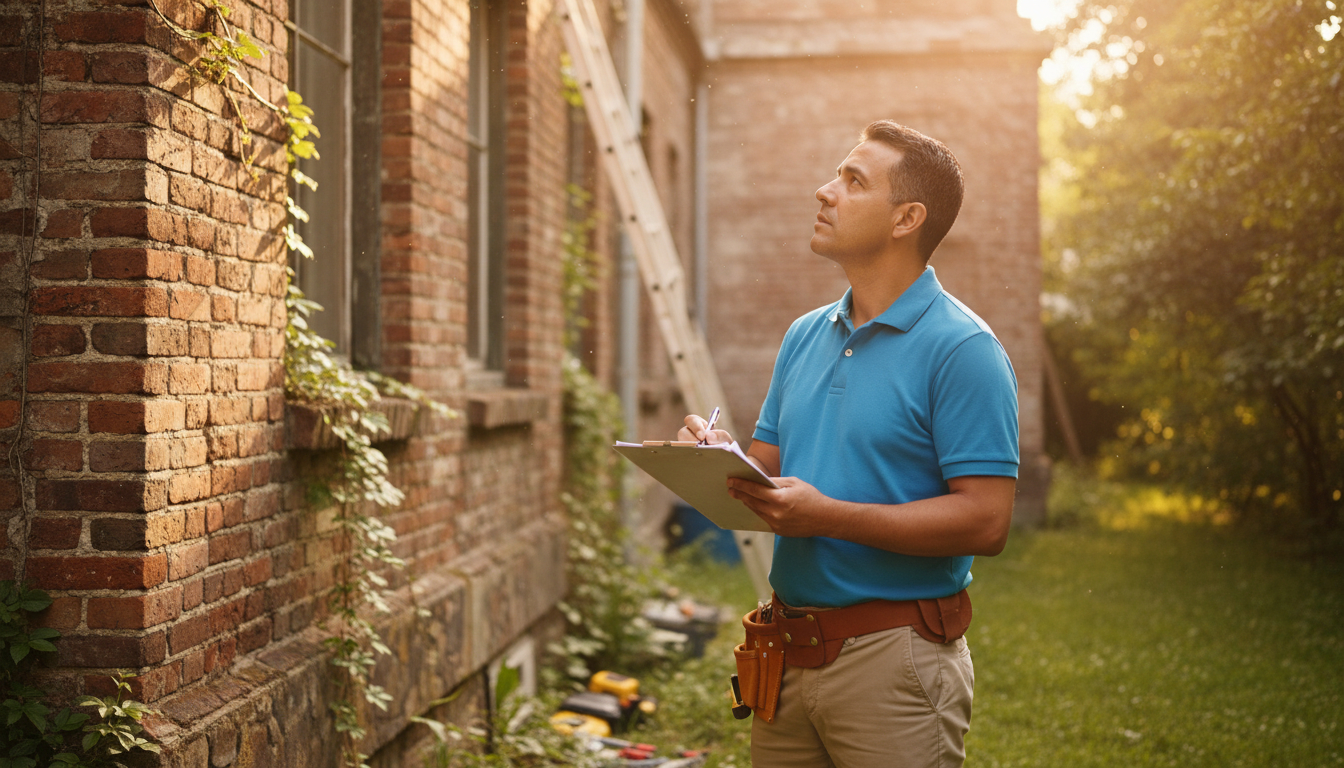
Step 1: Conduct a Comprehensive Property Assessment
Begin with a thorough inspection of your entire property. Examine structural elements, mechanical systems, potential water intrusion points, and electrical components. Note the age and condition of critical systems like HVAC, plumbing, and roofing.
Identify your property’s most valuable or irreplaceable items. These might include family heirlooms, important documents, expensive equipment, or items with sentimental value. Understanding what needs the most protection helps prioritize your planning efforts.
Step 2: Identify Specific Threats and Scenarios
Research historical disaster patterns in your area. Local emergency management offices provide valuable data about regional risks. Consider seasonal threats—spring flooding, summer storms, fall hurricanes, winter freezing—and create protocols for each scenario.
Don’t overlook equipment failures. Water heater leaks, appliance malfunctions, and HVAC issues cause more property damage than most natural disasters. Include these common scenarios in your emergency planning.
Step 3: Develop Response Protocols
Create clear, actionable steps for different emergency types. These protocols should be simple enough to follow under stress. Use checklists and flowcharts to guide decision-making during chaotic situations.
| Emergency Type | Immediate Actions | Within 24 Hours | Follow-Up Steps |
|---|---|---|---|
| Water Damage | Shut off water source, document damage, call emergency services | Contact restoration professionals, notify insurance, begin water extraction | Monitor drying progress, prevent mold growth, complete repairs |
| Fire Damage | Evacuate safely, call 911, secure property if possible | Contact insurance, document damage, arrange temporary housing | Work with restoration team, address smoke and soot damage, rebuild |
| Storm Damage | Seek shelter, avoid windows, document damage after safety confirmed | Emergency tarping, board up openings, contact insurance and restoration services | Complete structural assessment, permanent repairs, prevent secondary damage |
| Power Outage | Check circuit breakers, unplug electronics, maintain refrigeration | Monitor food safety, use backup power properly, check neighbors | Inspect systems when power returns, address any equipment damage |
Step 4: Establish Communication Plans
Disasters often disrupt normal communication channels. Establish multiple ways to reach emergency contacts and coordinate response efforts. Designate out-of-area contacts who can relay information if local networks fail.
Create a communication tree for larger properties or businesses. Everyone should know who reports to whom and how information flows during emergencies. Practice these protocols periodically to ensure they work when needed.
Step 5: Implement Preventive Measures
Prevention reduces the likelihood and severity of disaster damage. Install protective systems like water sensors, sump pumps with battery backup, surge protectors, and fire detection equipment. Regular maintenance of these systems ensures they function when needed.
🏠 Home Tip: Install water leak detectors near water heaters, washing machines, dishwashers, and under sinks. Modern smart sensors can alert your phone immediately when moisture is detected.
Landscape management plays a crucial role in disaster preparedness. Keep trees trimmed away from structures, ensure proper drainage around foundations, and maintain gutters and downspouts. These simple measures prevent many common disaster scenarios.
Step 6: Document and Store Your Plan
A plan stored only in your head isn’t truly a plan. Document everything in writing with clear instructions that anyone could follow. Use simple language and include diagrams or photos where helpful.
Store copies in multiple locations—one at the property in a waterproof container, one off-site with a trusted contact, and digital versions in cloud storage. Everyone who might need to implement the plan should have access to current copies.
Types of Disasters to Plan For
Comprehensive disaster preparedness addresses multiple threat categories. While you can’t predict which emergency you’ll face, preparing for various scenarios creates flexibility and resilience in your recovery plan.
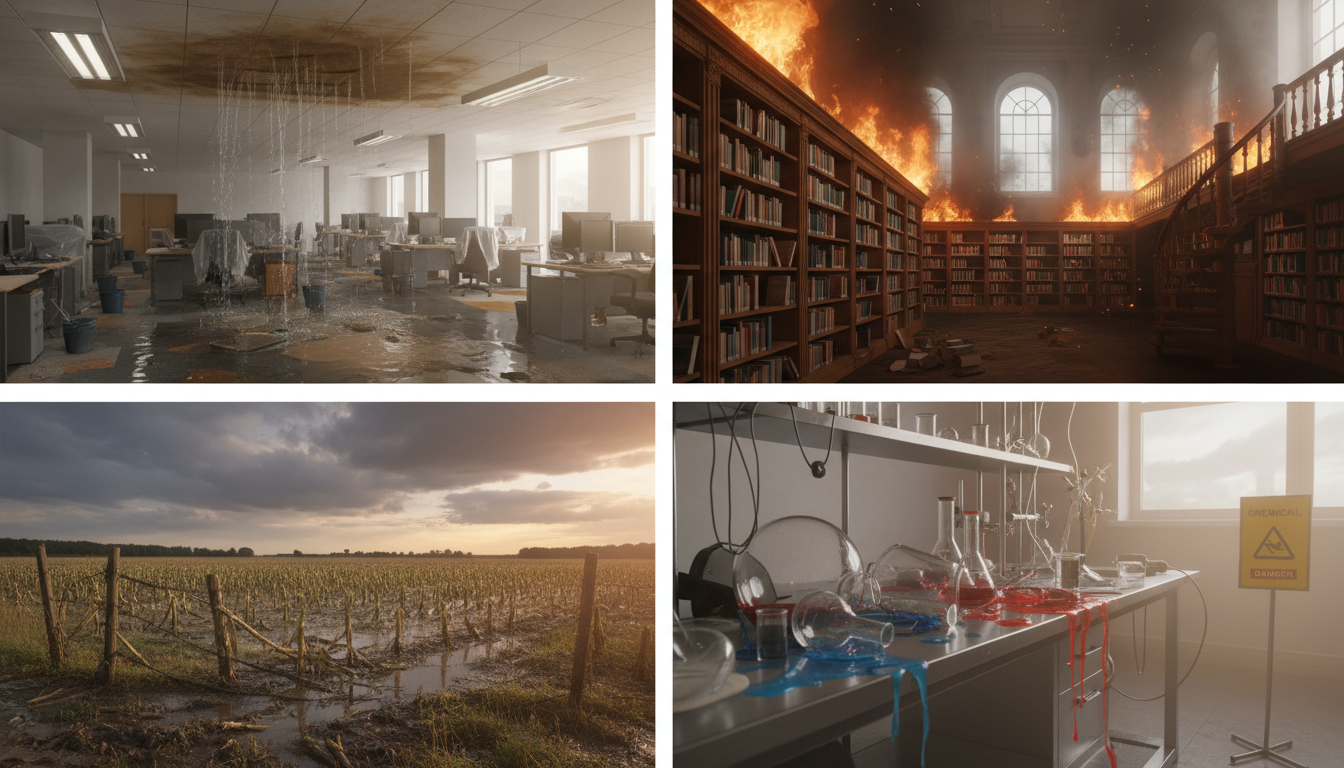
Water-Related Disasters
Water damage represents the most common property disaster, accounting for more insurance claims than any other category. Sources range from natural flooding and severe storms to burst pipes, appliance failures, and sewage backups.
Your recovery plan should identify all potential water entry points and establish monitoring systems. Know the location of main water shutoffs and how to operate them quickly. Consider installing automatic shutoff systems that detect leaks and stop water flow before major damage occurs.
⚠️ Important: Sewage backups require specialized handling due to contamination risks. Never attempt cleanup yourself—professional restoration services have the equipment and expertise to safely remediate category 3 water damage.
Fire and Smoke Emergencies
Fire disasters demand rapid response and clear evacuation protocols. Every recovery plan must prioritize life safety above property protection. Establish and practice evacuation routes, designate meeting points, and ensure everyone knows when to evacuate versus when to shelter.
Smoke damage often exceeds direct fire damage in scope and complexity. Even minor fires create extensive smoke and soot contamination requiring professional cleaning. Your plan should include immediate steps to minimize smoke spread and prevent permanent staining.
Storm and Wind Damage
Severe weather events create multiple simultaneous threats—wind damage, water intrusion, power outages, and flying debris. Your emergency planning should address preparation before storms arrive and response protocols for various damage scenarios.
Pre-storm preparation includes securing outdoor items, reinforcing vulnerable openings, and staging emergency supplies. Know how to safely shut down your property systems if evacuation becomes necessary. Post-storm protocols focus on safety assessments before re-entry and immediate damage mitigation.
Equipment and System Failures
Mechanical failures often occur without warning and can cause extensive damage if not addressed quickly. HVAC malfunctions, water heater failures, appliance leaks, and electrical issues all warrant specific response protocols in your recovery plan.
Regular maintenance dramatically reduces failure risks. Schedule annual professional inspections of critical systems and replace aging equipment before failures occur. Your plan should include maintenance schedules and records of all system service.
Disaster Preparedness for Different Property Types
Recovery planning requirements vary significantly based on property type and use. Residential properties face different challenges than commercial facilities, and each demands tailored approaches.
Residential Property Planning
Home disaster recovery planning balances comprehensive protection with practical implementation. Focus on threats most likely to affect residential properties—water damage from plumbing failures, storm damage to roofing and siding, and fire risks from cooking or heating equipment.
Family considerations add complexity to residential plans. Include provisions for children, elderly residents, and pets. Ensure everyone understands basic safety protocols and knows their role during emergencies. Practice evacuation routes and establish reunification procedures if family members are separated.
Commercial Property Planning
Commercial disaster preparedness extends beyond physical property protection to include business continuity considerations. Recovery plans must address employee safety, data protection, supply chain disruption, and customer communication strategies.
Regulatory compliance adds another layer to commercial planning. Many industries face specific requirements for emergency preparedness, data backup, and business continuity. Ensure your recovery plan meets all applicable regulations and standards for your business type.
Employee training becomes critical in commercial settings. Everyone should understand emergency protocols, know evacuation procedures, and recognize their role in disaster response. Regular drills and training sessions keep these procedures fresh and effective.
Maintaining and Updating Your Recovery Plan
Disaster recovery planning isn’t a one-time task—it requires ongoing maintenance and regular updates to remain effective. Property changes, new equipment, shifting risks, and lessons from near-misses all necessitate plan revisions.
Regular Review Schedule
Establish a systematic review process that ensures your plan stays current. At minimum, conduct comprehensive reviews annually. Major property changes, new equipment installations, or changes in property use should trigger immediate plan updates.
Quarterly reviews should verify:
- Emergency contact information remains accurate and current
- Equipment and supply locations haven’t changed
- All emergency equipment functions properly
- Insurance coverage matches current property value and contents
- Everyone knows their role and responsibilities
Testing and Drills
Regular testing reveals gaps in your emergency planning before real disasters expose them. Conduct drills that simulate different scenarios. These exercises shouldn’t feel like tests—frame them as practice opportunities that build confidence and competence.
After each drill, gather feedback from participants. What worked well? What caused confusion? What resources were missing? Use these insights to refine your procedures and make your plan more robust.
Lessons from Near-Misses
Every close call offers valuable learning opportunities. When you experience a minor incident or successfully avoid a potential disaster, document what happened and what worked. These real-world experiences provide insights no theoretical planning can match.
Share these lessons with family members or employees. Discussing actual events makes abstract planning feel concrete and relevant. It also reinforces the value of maintaining your recovery plan.
Working with Professional Restoration Services
Professional restoration companies bring expertise, equipment, and experience that dramatically improve recovery outcomes. Including these professionals in your disaster preparedness establishes relationships before emergencies occur and ensures faster response when disasters strike.
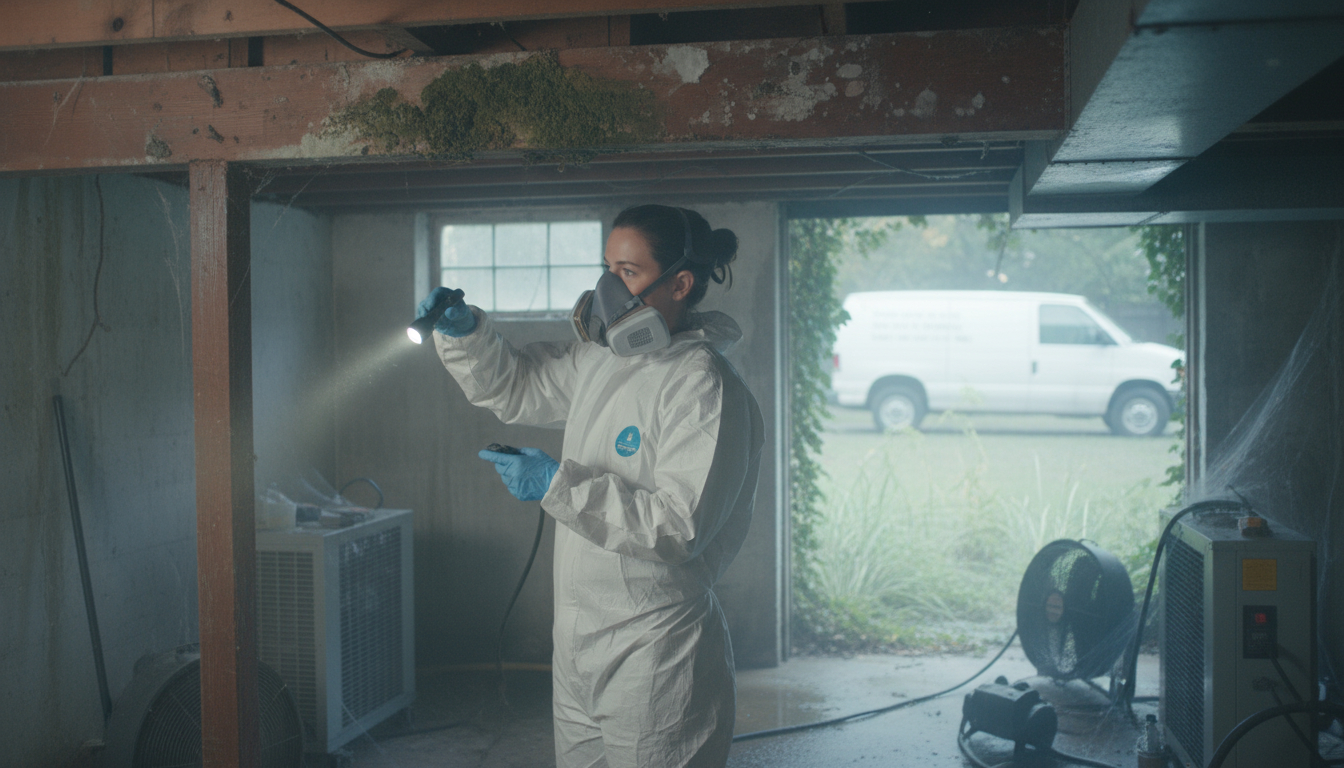
Pre-Disaster Relationships
Establishing relationships with restoration professionals before emergencies provides significant advantages. Many companies offer pre-planning services that identify vulnerabilities and establish response protocols specific to your property.
These partnerships ensure you’re not searching for help during a crisis. You already know who to call, what services they provide, and how quickly they can respond. This preparation reduces stress and speeds recovery.
24/7 Emergency Response
Disasters don’t follow business hours. Professional restoration services provide round-the-clock emergency response, arriving quickly to begin mitigation efforts that minimize damage and reduce recovery time.
Immediate professional response makes the difference between minor repairs and major reconstruction. Every hour of delay in water extraction increases damage severity and mold risk. Every minute counts in fire damage situations where prompt action prevents permanent losses.
Comprehensive Services
Professional restoration encompasses far more than cleanup. These services include damage assessment, emergency mitigation, content protection and restoration, structural drying, mold remediation, emergency board-up services, reconstruction services, and coordination with insurance companies.
This comprehensive approach streamlines recovery. Rather than coordinating multiple contractors, you work with one team that manages all aspects of restoration from emergency response through final reconstruction.
Common Mistakes in Disaster Recovery Planning
Understanding common planning pitfalls helps you avoid them in your own disaster preparedness efforts. These mistakes reduce plan effectiveness and create vulnerabilities that become apparent only during actual emergencies.
Incomplete Risk Assessment
Many property owners focus on obvious threats while overlooking less dramatic but more common risks. A comprehensive risk assessment considers all potential disasters, not just the most newsworthy ones. Equipment failures cause more property damage than hurricanes, yet receive far less planning attention.
Outdated Information
Plans created years ago often contain obsolete contact information, expired insurance policies, or references to equipment no longer on the property. Regular updates prevent these issues from undermining your emergency planning when you need it most.
Lack of Communication
Creating a plan without sharing it with everyone who needs to know renders it largely useless. Family members, employees, and key contacts should all understand the plan and their roles within it. Silent plans sitting in drawers don’t protect anyone.
Insufficient Testing
Untested plans often contain flaws that become apparent only during actual implementation. Regular drills identify problems while you still have time to fix them. Testing transforms theoretical planning into practical preparedness.
Neglecting Prevention
Some recovery plans focus entirely on response protocols while ignoring preventive measures. The best disaster is the one you prevent entirely. Balance your planning between prevention and response for maximum effectiveness.
Investment Considerations for Disaster Preparedness
Implementing comprehensive disaster recovery planning involves various investment levels depending on property size, risk factors, and protection goals. Understanding what influences these investments helps you make informed decisions about your emergency planning.
Factors Affecting Planning Investment
Property size and complexity directly impact planning requirements. Larger properties need more extensive documentation, additional emergency equipment, and more sophisticated monitoring systems. Multi-story buildings face different challenges than single-level structures.
Geographic location significantly influences planning needs. Properties in flood zones, coastal areas, or regions with severe weather patterns require more robust protection systems and more detailed protocols. Local building codes and insurance requirements also shape planning investments.
Existing infrastructure affects planning needs. Properties with aging systems, outdated protection equipment, or deferred maintenance require more extensive upgrades to achieve adequate disaster preparedness. Modern properties with current systems need less investment to reach similar protection levels.
Value Versus Risk Analysis
Evaluate planning investments against potential losses. Properties with high values, irreplaceable contents, or business operations justify more comprehensive disaster preparedness. The goal isn’t spending the most—it’s achieving appropriate protection for your specific situation.
Consider both direct and indirect losses. Property damage represents obvious risk, but business interruption, displacement costs, and quality of life disruption also factor into your risk analysis. Comprehensive recovery planning protects against all these potential losses.
Phased Implementation Approach
You don’t need to implement everything simultaneously. Prioritize based on your highest risks and most critical vulnerabilities. Address immediate threats first, then expand your disaster preparedness over time as resources allow.
Start with essential elements—emergency contacts, basic documentation, and immediate response protocols. Add protective systems and more sophisticated monitoring as your planning matures. This phased approach makes comprehensive disaster recovery planning achievable for any budget.
Take Control of Your Property’s Future
Disaster recovery planning transforms uncertainty into confidence. While you can’t prevent every emergency, you can control how prepared you are to face whatever comes. The investment of time and resources in comprehensive emergency planning pays dividends in reduced damage, faster recovery, and invaluable peace of mind.
Don’t wait until disaster strikes to wish you had prepared better. Start building your recovery plan today. Begin with a property assessment, identify your most pressing vulnerabilities, and establish basic protocols. Every step you take toward comprehensive disaster preparedness reduces your risk and strengthens your resilience.
Professional restoration experts can help you develop property-specific plans that address your unique risks and requirements. Their experience with countless disaster scenarios provides insights that strengthen your emergency planning and ensure you’re truly prepared when emergencies occur.
⚠️ Ready to protect your property with professional disaster recovery planning? Contact our 24/7 emergency restoration team to discuss your specific needs and create a comprehensive recovery plan tailored to your property. Don’t wait for disaster to strike—prepare today for whatever tomorrow brings.
Frequently Asked Questions
How often should I update my disaster recovery plan?
Review your disaster recovery plan at least annually, with quarterly checks of critical elements like contact information and emergency supplies. Update immediately after major property changes, equipment installations, or when you experience near-miss situations that reveal planning gaps. Regular testing and drills often identify areas needing updates between scheduled reviews.
Can I create an effective recovery plan without professional help?
While basic disaster preparedness can be developed independently, professional restoration experts bring valuable experience identifying vulnerabilities you might overlook. They’ve seen countless disaster scenarios and understand which protective measures provide the best value. Professional consultation strengthens your plan significantly, though basic preparation is certainly better than no planning at all.
What are the most critical elements to include in a disaster recovery plan?
Every effective recovery plan must include comprehensive emergency contacts, detailed property documentation with photos and inventory, clear response protocols for different disaster types, and accessible emergency supplies. Additionally, regular maintenance schedules, insurance documentation, and established relationships with professional restoration services form the foundation of solid disaster preparedness that actually protects when emergencies occur.
How do I know if my property faces high disaster risk?
Check with local emergency management offices for historical disaster data in your area. Review flood zone maps, examine your property’s elevation relative to surrounding areas, and assess the age and condition of critical systems like plumbing and roofing. Properties with aging infrastructure, basement areas, proximity to water sources, or locations in severe weather zones typically face elevated risks requiring more comprehensive planning.
What’s the difference between disaster recovery planning and regular property maintenance?
Regular maintenance focuses on preventing wear and system failures through scheduled upkeep. Disaster recovery planning encompasses maintenance but extends far beyond it to include emergency protocols, documentation systems, contact networks, and response strategies for various disaster scenarios. Think of maintenance as preventing problems, while disaster preparedness includes both prevention and comprehensive plans for handling emergencies when they occur despite preventive efforts.
Should my disaster recovery plan address both natural disasters and equipment failures?
Absolutely. Equipment failures like burst pipes, water heater leaks, and appliance malfunctions cause more property damage than most natural disasters. Comprehensive emergency planning addresses all potential threats regardless of source. Many recovery protocols overlap between disaster types, so planning for both natural and man-made emergencies creates a more resilient and effective overall strategy.

